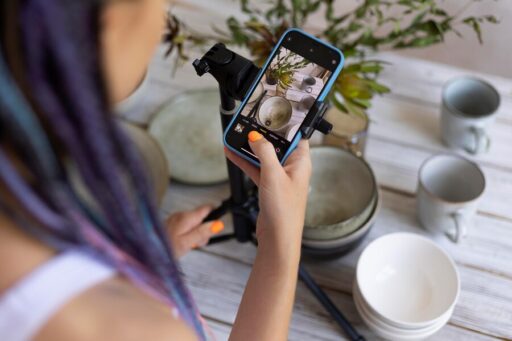When working on commercial projects, using high-quality images is essential to communicate ideas effectively and enhance the visual appeal of your work. However, utilizing images legally and ethically is equally crucial. Licensing images for commercial projects can be a complex process involving legal, financial, and technical considerations. Failing to adhere to copyright laws can lead to penalties, lawsuits, and reputational harm. In this guide, we delve into how you can license images legally for your commercial projects, ensuring compliance while maximizing creative potential.

Understanding Image Licensing Basics
Before diving into the specifics of licensing, it’s vital to understand the basic types of image licenses available. Image licensing is a legal agreement between the image creator (or copyright holder) and the user, granting permission to use the image under specified conditions.
- Royalty-Free Licenses: These allow you to pay a one-time fee and use the image multiple times without incurring additional charges. However, “royalty-free” does not mean “free,” and there may still be restrictions on commercial use or distribution. Learn more about royalty-free licenses.
- Rights-Managed Licenses: These are more restrictive and require payment based on factors like usage, audience, and duration. They are often ideal for exclusive or high-stakes projects. Explore rights-managed licensing here.
- Creative Commons Licenses: Creative Commons offers a variety of licensing options, some of which allow for commercial use. Always verify the specific terms before usage. Find Creative Commons licenses.
- Public Domain: Images in the public domain are free to use without restrictions, but verifying their status is essential to avoid accidental infringement. Check public domain guidelines.
Steps to Legally License Images for Commercial Use
1. Determine Your Project’s Needs
The first step is to define the purpose of your commercial project. Will the images be used for advertising, websites, or print materials? Determining the scope of usage helps you select the appropriate license type.
- For recurring use, consider royalty-free licenses.
- For unique campaigns, rights-managed licenses may provide better protection and exclusivity.
Compare licensing options for specific needs.
2. Source Reliable Platforms for Licensed Images
Utilizing trustworthy platforms ensures that you get legitimate, high-quality images. Popular sources include:
- Shutterstock: Offers a vast library of royalty-free images suitable for commercial projects. Explore Shutterstock’s library.
- Getty Images: Renowned for its rights-managed and editorial content. Check Getty Images’ catalog.
- Adobe Stock: Integrates seamlessly with Adobe Creative Cloud and offers robust licensing options. Visit Adobe Stock.
- Unsplash and Pexels: Provide free images but verify terms for commercial use. Read Unsplash’s licensing terms.
3. Understand the Licensing Terms
Before downloading or purchasing an image, carefully review the licensing terms to ensure they align with your project’s requirements. Key factors include:
- Usage Rights: Does the license cover online, print, or broadcast use?
- Modification Rights: Can you alter the image, and are derivative works allowed?
- Exclusivity: Does the license grant exclusive usage rights to prevent competitors from using the same image?
Learn how to interpret licensing agreements.
4. Keep Documentation
Maintain thorough records of all licensing agreements, receipts, and correspondence. This ensures you can prove your legal right to use the image if disputes arise. Discover tips for organizing licenses.
5. Avoid Using Unlicensed Images
Using images without permission, even if found via search engines or social media, is a breach of copyright laws. Utilize tools like Google’s “Usage Rights” filter or TinEye to find properly licensed images. Learn how to search for licensed images.
Common Mistakes and How to Avoid Them
- Assuming Free Means Commercially Usable: Just because an image is free does not mean it’s available for commercial use. Verify the terms of use explicitly.
- Ignoring Attribution Requirements: Many licenses, especially under Creative Commons, require proper attribution. Follow the specified format to avoid infringement. Attribution guidelines.
- Relying Solely on Free Platforms: While free platforms are helpful, premium services often offer better quality and legal assurance.
FAQs About Licensing Images Legally
Q1: Can I use images labeled as “free for commercial use” without attribution?
Not always. Check the specific license agreement for attribution requirements. Platforms like Pixabay or Pexels may label images as “free,” but terms can vary. Explore Pixabay’s license details.
Q2: What happens if I use an unlicensed image by mistake?
Accidental use still constitutes copyright infringement and may result in fines or lawsuits. Reach out to the copyright holder to negotiate usage rights or remove the image immediately. Legal guidance on copyright disputes.
Q3: How do I ensure exclusivity in image use?
Opt for rights-managed licenses or negotiate directly with photographers for exclusive rights. Learn about exclusive licenses.
Conclusion
Licensing images for commercial projects legally involves understanding different license types, sourcing images from credible platforms, and adhering to licensing terms. By following these steps, you can mitigate legal risks, enhance your project’s credibility, and respect the creative rights of others. Whether you’re a small business owner, marketer, or designer, investing in proper image licensing is a small cost compared to the potential repercussions of copyright infringement. Always prioritize ethical practices and leverage resources to stay compliant. For more comprehensive guides on copyright and licensing, visit trusted platforms like Creative Commons and Shutterstock.









